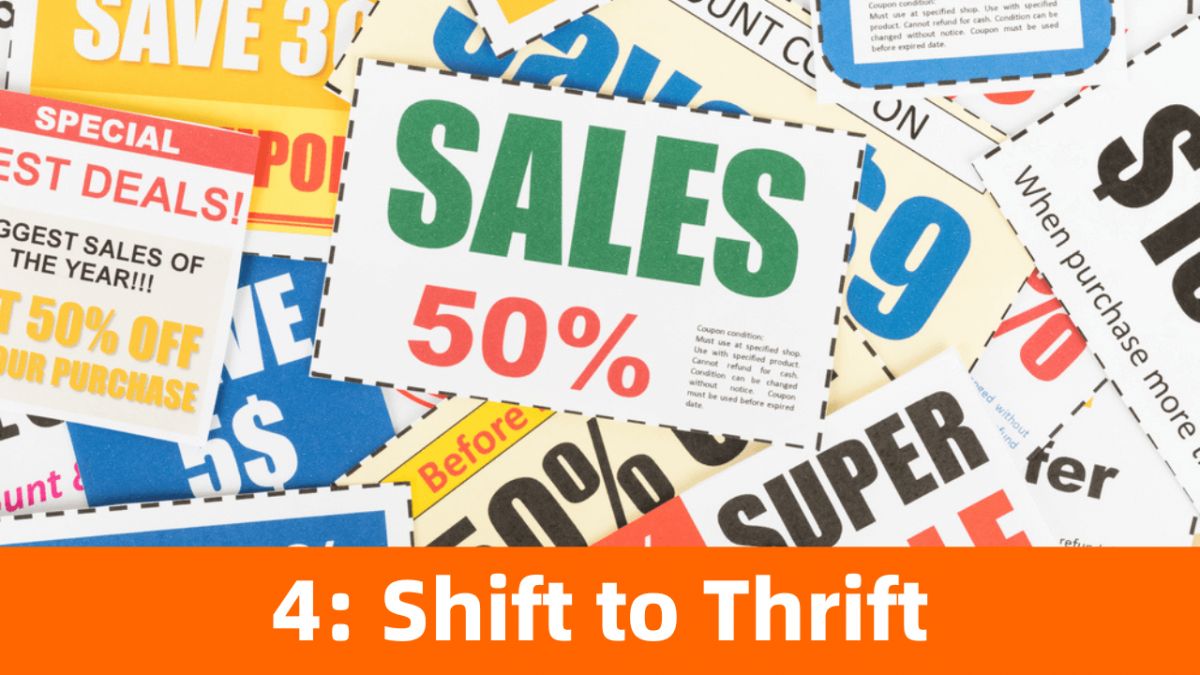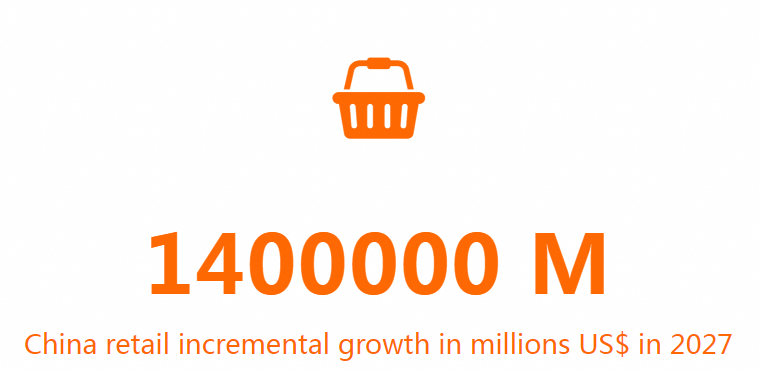
E-commerce is constantly evolving to keep pace with the changing demands of consumers.
In 2024, as shoppers increasingly lean on artificial intelligence to answer questions and refine their searches, they will expect merchants, brands and marketplaces to keep pace.
Generative AI features deployed last year, such as chatbots and content-creation tools, will gain traction among users and merchants — and we’re just getting started — as yet unimaginable use cases will be rolled out in the years to come.
“The technology is nowhere near reaching its full potential; when it does, the disruptions are going to be massive,” said James Yang, a partner at Bain & Co, a consultancy.
We canvased Alibaba Group’s businesses, marketplaces and sector experts for their thoughts on consumer trends set to shape the industry in 2024 and how AI can help meet demand.
“AI’s footprint will continue to expand, fostering an increasingly barrier-free and streamlined global commerce experience that benefits businesses of all sizes,” said Kaifu Zhang, Vice President of Alibaba International, who leads the company’s AI initiatives.
Check out the top e-commerce trends in descending order below.

Consumers need light relief after several turbulent years, so they will bond with brands that inject fun into shopping.
A backlash against boring helps explain why interactive and joyful retail formats were wildly popular in 2023. Livestreaming e-commerce and short-form videos straight to shoppers’ cell phones spring to mind.
“The TV is no longer the center of the living room in China, it’s been replaced by the mobile,” said Daniel Zipser, who leads consumer and retail efforts in Asia at McKinsey, a consultancy.
Zipser sees China as a hotbed of retail innovation and a leader in marrying livestreaming with commerce. He paid close attention to livestreaming developments during China’s 11.11 shopping festival, the world’s largest shopping campaign that runs from late October to mid-November. This is when merchants pour money into marketing campaigns and adopt the latest innovations in commerce.
He spotted the spread of a richer and more varied tapestry of livestreamers.
On China’s largest digital marketplace, Taobao, 89 livestreaming e-commerce channels generated over RMB100 million ($14.1 million) in GMV each during 11.11, also known as Single’s Day.
Livestreamers can be influencers, celebrity anchors, or even avatars. One fast-developing trend to watch in 2024 is merchants creating their own livestreaming channels rather than relying on a third party to connect with clients. Taobao said 64 merchant-run livestreaming channels recorded turnover above RMB10 million, and 675 made sales of over RMB10 million during 11.11.
Livestreaming platform Taobao Live told Alizila it will add to its stable of top-tier streamers in 2024, attracting KOLs with audiences in vertical consumer segments and niche categories. To do this, it is sharpening its conversion rate, creating a more engaging consumer experience and a richer product pool, leveraging AI to do so.
“We expect livestreaming e-commerce and high-quality content will continue to be popular among consumers in 2024,” a spokesperson for Taobao Live told Alizila.
We have witnessed the power of innovative activities such as pop-ups, concerts and livestreams
– Gary Topp EUROPEAN COMMERCIAL DIRECTOR, ALIEXPRESS
Consultants see the livestreaming e-commerce trend in China spreading worldwide.
One conduit is the marketplace AliExpress, which took livestreaming to another level by recently introducing a digital avatar to host a 24-hour non-stop livestream in some markets.
Livestreaming is also helping knit online and offline shopertainment together into a seamless experience for shoppers. In a high-profile example, AliExpress organized a concert on Nov. 10 in Madrid, with performers including Henry Mendez and Funzo & Baby Loud, livestreaming it exclusively on its digital marketplace.
“In the ever-evolving consumer market, we have witnessed the power of innovative activities such as pop-ups, concerts and livestreams in enhancing the overall consumer experience,” said Gary Topp, AliExpress’ European commercial director.
Gamification is also gathering momentum as a way of engaging and entertaining shoppers.
As consumers worldwide tightened their purse strings, a touch of tinsel helped lighten the mood. Alizila has spotted examples in 2023 of treasure hunting and brands quickly rotating goods, so consumers always have something to discover.
“Times are a bit tougher today; perhaps the sky’s not as blue. But consumers don’t want to feel like they have to save money; that’s where delighting them is important both online and offline,” said Bain’s Yang.
AliExpress invited consumers in eligible markets to participate in draws and games to win promotion codes and products during 11.11. In Korea, the marketplace and its brand ambassador, South Korean–American actor Ma Dong-seok also known as Don Lee, launched a blind-box campaign, where the contents were a surprise. Shoppers could purchase one of the 80,000 blind boxes, collectively worth KRW1.1 billion ($852 million).
“At AliExpress, we prioritize fostering connections with our customers and gaining insights into their needs and aspirations through diverse engagement initiatives. This helps us stay ahead of market trends and foster a vibrant shopping experience that is in tune with our customers’ preferences,” said AliExpress’s Topp.

Economic uncertainty and the rising cost of living dented consumer confidence in 2023. As a result, saving money is a high priority, and shoppers will look for novel ways to stretch their household budgets in 2024, said Euromonitor International.
Value hackers will try to cut expenditure without compromising on quality, and they’re finding crafty ways to do it, the consultancy said.
These consumers actively seek cheaper options, pay with credit cards or rewards points, switch to premium private-label brands and participate in free activities. Deinfluencers have also become popular on social media this year, where KOLs expose products they believe are overpriced.
In China, the psychological impact of a slower-than-expected recovery from the pandemic is still widely felt, and consumers displayed value-seeking behavior writ large during the 11.11 shopping festival.
“It’s not a one-time tightening of the purse strings,” said Bain’s Yang, who believes this value-seeking behavior will continue for at least the next one to two years.
On the consumer-to-consumer marketplace Taobao, shoppers placed 210 million orders on a direct discount venue offering a 15% price reduction during 11.11, while app’s forum featuring value-for-money products from manufacturers generated nearly 90 million orders.
“Price competitiveness is the strongest force at work for both branded goods and non-branded goods, said Alibaba Group’s CEO Eddie Wu, who also took on the mantle of Taobao and Tmall Group’s CEO in December.
To offer the best price possible to consumers, Wu plans to leverage the group’s platform model to optimize product efficiency, enhance supply chain efficiency, and adopt price competitiveness as a core strategy across all product tiers in the coming years.
Taobao and Tmall Group continued its value drive in December with a ‘year-end good price’ shopping campaign. Tmall Taobao World, which facilitates shopping on Taobao and Tmall for Chinese consumers outside mainland China, launched its year-end sales campaign in markets including Macao and Taiwan last month.
A spokesperson for Taobao and Tmall Group told Alizila that its marketplaces will continue to improve their traffic distribution mechanisms in 2024, provide traffic support for merchants who are willing to provide consumers with good products at reasonable prices, reduce the cost of customer acquisition for merchants, and match good products and good prices with users more efficiently, “all the while continuing to improve Taobao’s pricing power.”

Retailers and brands are pivoting swiftly to cater to these bargain hunters.
The trick to sustainably offering quality products at great prices, say consultants, is re-engineering supply chains.
“That’s the Rubik’s cube you have to solve to offer value for money, but it’s also very, very difficult to do,” said Bain’s Yang.
Data and applications are often siloed across supply chains and retailers don’t always have the budget to rip out legacy systems and replace them with an end-to-end solution. Generative AI can interact with structured and unstructured data, allowing users to interact with data end-to-end and ask simple questions such as: “Where is the excess inventory?”
“Gen AI presents a great opportunity to reduce waste in terms of cutting inventories as supply chains become more efficient. Liquidation of inventory is expensive,” said Zipser.
This year, AliExpress has been rolling out a business model called AE Choice, which offers more supply chain services and a curated collection of products. In September, it began piloting a global five-day delivery service in Spain, collaborating with logistics company Cainiao.
“Consumers’ preferences are influenced by key factors such as product ratings, pricing, popularity, availability and timely delivery. It’s evident that affordability alone is not enough; product quality holds significant importance. To meet these demands, AliExpress has launched Choice,” said AliExpress’s Topp.
“This initiative aligns with the growing trend of consumers seeking value-for-money options. Moving forward, our commitment lies in continuously enhancing our user experience, expanding our product selection, and providing the best value for money.”

2023 disappointed many China pundits who were optimistic about the world’s second-largest economy rebounding swiftly from the pandemic. That optimism faded during the year as economic headwinds buffeted consumer sentiment.
Yet long-term structural trends continue to unfold, and China’s economy is steadily becoming more consumption-driven.
When Chinese policymakers recently convened in Beijing to discuss the year ahead, they emphasized steady economic growth in 2024 and said the long-term positive outlook had not changed. While 5% growth may not set pulses racing like the 7%-plus a decade ago, China’s economy is far bigger now.
McKinsey sees the country’s retail sector, encompassing both products and services, rising by 5% this year, with similar projections for the coming years. Given China’s vast market size, this incremental growth would translate into an additional RMB10 trillion ($1.4 trillion) in retail sales in 2027.
To put $1.4 trillion in perspective, it would make China the single-largest retail growth market globally. Just the incremental growth would equal the combined retail sales of India, Indonesia, and South Korea today, according to McKinsey’s analysis.
“I’m cautiously optimistic,” said McKinsey’s Zipser.
Simulations by McKinsey showed that the number of upper-middle and high-income households may reach 200 million by 2025 and 260 by 2030. Continued urbanization and rising income levels will drive consumption growth sustainably in the medium to long term, it said as the number of high-income cities will hit 82 by 2025 and 93 by 2030.

Technological change is, of course, a growth stimulant. Globally, generative AI could generate value for the retail and consumer packaged goods industry by increasing productivity by 1.2 to 2% of annual revenues, or an additional $400 billion to $660 billion, McKinsey estimated.
“As large language models become increasingly mature, AI can be leveraged to achieve goals in e-commerce, such as cost reduction, efficiency improvement, and optimization of the consumer experience,” a Taobao and Tmall Group spokesperson told Alizila.
Research boutique China Skinny pointed out that brands hunting for growth should take market accessibility into account. China’s highly developed e-commerce market provides a platform to reach consumers nationwide, versus a hefty outlay in a brick-and-mortar boutique built in, say, downtown Shanghai.
Illustrating the maturity of e-commerce in China, the state’s post bureau said it had delivered over 140 billion parcels across China in the year up to November 2023, higher than India’s 88.8 million parcels in 2022.

Shoppers feel their individual contributions to holding back climate change are limited, and they’re tuning out messages that place the burden on their behavior, said Euromonitor International.
Instead, they are throwing the burden back onto retailers to show they are green. More than three in four consumers would appreciate information on making environmentally friendly online purchases, a report commissioned by Alibaba Group showed earlier this year.
As a result, merchants and marketplaces are stepping up their efforts on green labeling and certification.
Alibaba’s B2C e-commerce platform Tmall launched eco-friendly product labels in 2022 to help consumers check the impact of their purchases. Meanwhile, Alibaba’s Energy Expert leverages deep learning-based AI models to analyze the carbon footprint of products.
“We see an increasing number of sustainably-minded companies embedding sustainability into their core business models and operations to reduce their environmental impact. They’re tapping into data analytics to understand their businesses’ carbon footprints and gain actionable insights needed to transform their operations and supply chain,” said Energy Expert’s general manager, Zhou Wenwen.
More companies are collaborating to turn supply chains green. Alibaba and China’s largest instant noodle maker Master Kong worked with French utility Veolia to recycle Master Kong’s plastic packaging into rPET pellets. The pellets were then used to produce goods for sale on Tmall Supermarket, a grocery platform.
“They [Alibaba] are actually aligning the interest between stakeholders,” said Herbert Yum, Euromonitor’s APAC research manager.
The circular economy is also gaining traction, where markets incentivize consumers to reuse products, rather than scrapping them and then extracting fresh resources from the environment.
In China, the second-hand resale marketplace in China Xianyu is thriving, recording DAU up over 20% year-over-year in September, the latest data available. Xianyu, also known as Idle Fish, told Alizila that in the fiscal year ending March 31, 2023, its users’ cumulative carbon reduction reached 3.14 million tons, and the average daily carbon reduction amount hit 8,600 tons.
Xianyu attributed progress in promoting a green lifestyle among consumers to its business model. The model, which it dubs SEED (Sustainability, Ecosystem, Encouragement and Digital) encourages recycling using digital technologies.
“In the SEED model, the key is to make sure users understand carbon reduction and put it into action,” Xianyu’s President Ding Jian said.

Generative AI opened up a wealth of opportunities for merchants and brands to become more efficient and offer consumers a more tailored shopping experience in 2023.
As Franck le Moal, Group IT Director and CIO of LVMH, recently told Alizila: “For LVMH Maisons, having this strong intimacy and strong interaction with customers to invent a personalized experience is absolutely critical. We believe that technology is able to bring us this unique opportunity.”
In 2024, consumers will keep testing generative AI’s capabilities and they expect brands to do the same, said Euromonitor, a consultancy. The retail industry must embrace ongoing experimentation to stay one step ahead.
Take chatbots as an example. The well-established software app designed to mimic human conversation is enjoying a renaissance as generative AI renders the way it communicates more natural.
“AI is taking chatbots to the next level,” said McKinsey’s Zipser.
Generative AI can create smarter virtual assistants that create a more personalized shopping journey. It can offer detailed product recommendations in various formats, including text and short videos.
This technology is particularly useful for consumers shopping online because there is such a smorgasbord of choices, versus in a brick-and-mortar store where a quick browse of the shelves takes in all the options on offer.
A fine-tuned chatbot can save consumers time by honing in on the product they want at an acceptable price point.
On Taobao, the embedded generative AI app Wenwen — which means asking in Mandarin — clarifies shoppers’ demands and helps consumers navigate discounts. Since its beta launch in September, over 10 million people have tried the tool, a Taobao and Tmall Group spokesperson said in late December.
“Wenwen is a very powerful tool; not many companies have already adopted such a tool in their own customer journeys,” said Euromonitor’s Yum.
To be sure, there’s still room for improvement, which spells opportunity for market leaders. More than 40% of consumers would be comfortable with voice assistants offering personalized recommendations. Still, but less than one-fifth felt the same about using bots to answer complex customer service questions, according to Euromonitor’s 2023 survey.
“Taobao and Tmall will continue to actively embrace AI technology and work with ecosystem-wide partners and merchants to provide a more intelligent and efficient business experience,” the Taobao and Tmall Group spokesperson said.
Generative AI solutions also support innovation by merchants, which could accelerate go-to-market strategies by helping speed up content creation and ideation, said Euromonitor International.
Businesses that leverage generative AI’s capabilities will be able to synthesize user data faster to guide product development. Plus, integrating customer inputs will help companies customize marketing campaigns, merchandise and services at scale.
Alibaba International Digital Commerce Group said in November it was piloting Aidge, its first artificial intelligence-powered suite of application programming interfaces. Aidge is built on Alibaba International’s proprietary large language models and computer vision models. Alibaba International is the overseas commerce arm of Alibaba Group, housing Lazada, AliExpress, Alibaba.com and Trendyol among other businesses.
“AI has emerged as a powerful catalyst, enabling businesses to amplify their strengths and minimizing hurdles such as language and cultural barriers. We are keenly aware of its immense potential, and this is why we are actively piloting Aidge, our commerce-centric AI suite designed for global merchants, in collaboration with industry partners,” said Kaifu Zhang, Vice President of Alibaba International, who leads the company’s AI initiatives.
This article was originally published on Alizila, written by Alison Tudor Ackroyd.
Tech for Innovation | Alibaba Cloud 2023 Milestones and Highlights
Tech for Innovation | Alibaba Cloud Top 10 Artificial Intelligence Blogs of 2023

1,081 posts | 271 followers
FollowAlibaba Cloud Community - August 2, 2024
Alibaba Cloud Community - January 2, 2024
Alibaba Cloud Community - November 23, 2021
Alibaba Cloud Community - October 28, 2024
Alibaba Cloud Community - December 26, 2024
Alibaba Cloud Community - August 1, 2024

1,081 posts | 271 followers
Follow E-Commerce Solution
E-Commerce Solution
Alibaba Cloud e-commerce solutions offer a suite of cloud computing and big data services.
Learn More Black Friday Cloud Services Sale
Black Friday Cloud Services Sale
Get started on cloud with $1. Start your cloud innovation journey here and now.
Learn More Retail Solution
Retail Solution
Alibaba Cloud enables digital retail transformation to fuel growth and realize an omnichannel customer experience throughout the consumer journey.
Learn MoreMore Posts by Alibaba Cloud Community